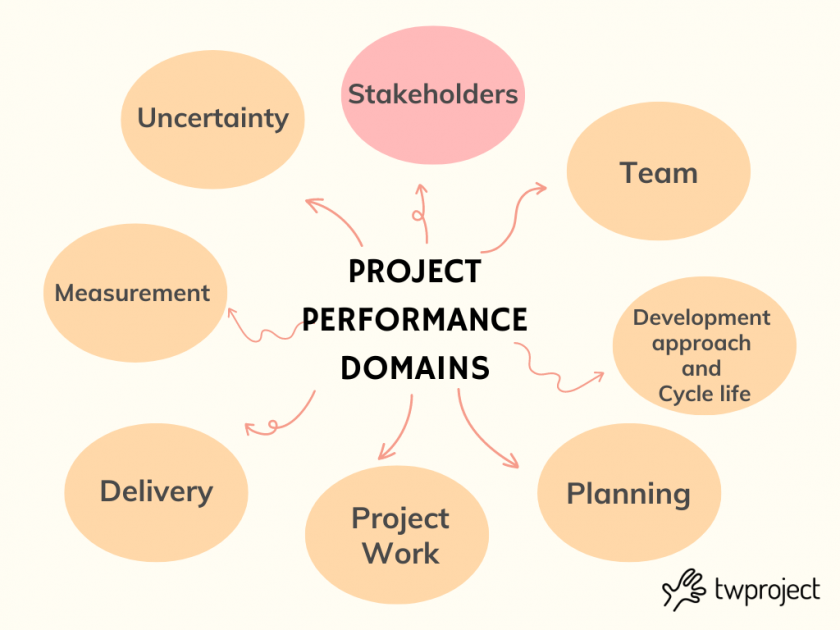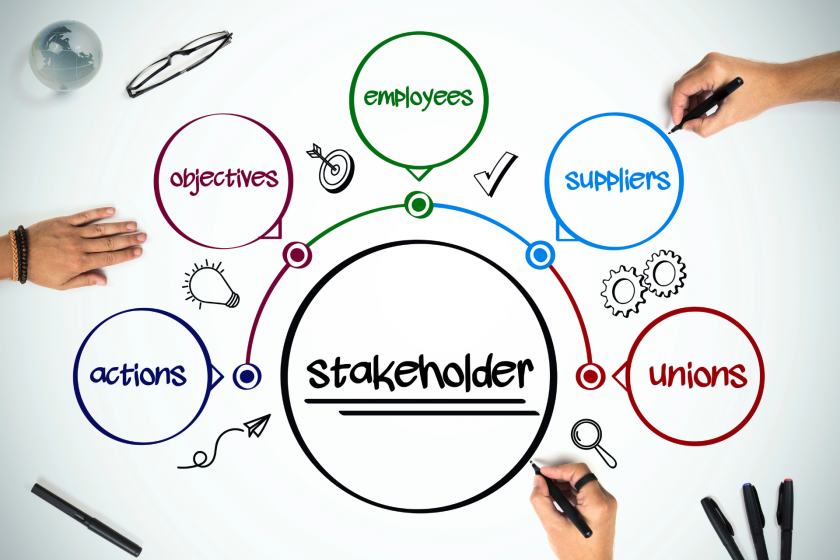In the seventh edition of the PMBOK, the stakeholder performance domain is crucial in ensuring that stakeholders’ needs, expectations, and influences are appropriately understood and managed.
Understanding the needs, expectations, and dynamics of stakeholders has become crucial to project success, and the stakeholder performance domain offers a structured and focused approach to addressing this challenge.
CONTENT
This performance domain is central to developing appropriate management strategies to involve stakeholders in decision-making and project implementation effectively.
In this article, we will provide a detailed description of the Stakeholder Performance Domain, listing current challenges and some strategies to increase stakeholder engagement.
Stakeholder Performance Domain: why stakeholder engagement is important

The stakeholder performance domain is about the processes needed to acknowledge and collaborate with stakeholders and establish positive relationships while respecting their expectations.
A project without effective stakeholder involvement is doomed to failure.
Stakeholder engagement may look easy on paper, but it comes with several challenges for a project manager, including:
- Unrealistic or conflicting expectations
- Stakeholders unwilling or reluctant to participate
- Divergent or conflicting interests
- Different communication strategies depending on the type of stakeholder
- No formal authority over stakeholders.
To meet these challenges, a project manager must have good communication, negotiation, conflict management, and leadership skills.
The crucial element a project manager must pay attention to is avoiding the dissatisfaction of even one stakeholder.
To prevent this situation and ensure stakeholder involvement, there are several tools that you can use:
- Identification
- Analysis
- Priority setting
- Involvement
- Stakeholder monitoring throughout the project.
Let’s have a look at these points in detail.

1. Identify stakeholders
Stakeholder identification should be done at the beginning of the work and should happen regularly throughout the project life cycle.
Stakeholders come and go and can change over time, especially during more extended and complex projects.
Some stakeholders, such as the client, sponsor, project team, etc., are easy to identify, while others are not immediately visible.
Therefore, it is important to compare with other people to make sure to involve everyone who will be affected by the project.
2. Analyze stakeholders
This step is necessary to understand each stakeholder’s interests, expectations, and power within the project.
Not all stakeholders are the same, which is why it is necessary to classify the various needs:
- Attitude
- Beliefs
- Expectations
- Concerns
- Degree of influence
- Proximity to the project
- Interest in the project
- Any other aspects related to stakeholder interaction with the project
This information helps the project manager and the team to respond correctly to different expectations.
In addition to individual analysis, one should also consider how stakeholders interact with each other, as they may form alliances that can help or hinder project goals.
3. Prioritize stakeholders
After stakeholder analysis, those with the most power, influence, and interest can be selected and filtered.
There are so many stakeholders in many projects, and it is impossible for the team to focus effectively on everyone.
Therefore, investing more time with the stakeholders with the most power and interest in the project is natural.
4. Involve stakeholders
Involving stakeholders means collaborating to achieve success.
This includes: managing expectations, solving problems, negotiating, prioritizing, etc.
Engaging stakeholders requires soft skills, such as active listening, conflict management, and critical thinking.
Involvement must be interactive and involve exchanging information from both sides through conversations, phone calls, meetings, and brainstorming.
5. Monitor stakeholders
Stakeholders will change over time: some will be less involved, while others will be more engaged.
In addition, new stakeholders will arise, and expectations will change.
Therefore, it is necessary to regularly evaluate whether the stakeholder engagement strategy is effective or needs to be adjusted.
To gauge stakeholder satisfaction, it’s important to regularly gather feedback either through one-on-one conversations or by conducting surveys for larger groups.
If the results show dissatisfaction, it will be necessary to rethink and improve the stakeholder engagement strategy.
5 strategies for increasing stakeholder engagement
When stakeholders feel actively involved in decision-making and goal achievement, it generates an environment of trust and collaboration that fosters the optimization of overall business performance.
In this section, we will explore some key strategies for increasing stakeholder engagement:
- Effective communication: open, clear, and prompt communication is critical to engage stakeholders.
Uses various communication channels, such as personal meetings, e-mails, newsletters, or online collaboration platforms, to regularly inform stakeholders about key project or company developments, progress, and decisions.
Ensure that information is easily accessible and understandable, tailoring it to different types of stakeholders and their communication preferences.
2. Active involvement: to increase stakeholder engagement, making them feel part of the decision-making process is important: schedule workshops, brainstorming meetings, or feedback sessions to gather their opinions, ideas, and suggestions.
Take their perspectives seriously and consider their requests, showing you value their input.
This will promote a sense of participation and value for stakeholders, increasing their overall involvement.
3. Building strong relationships: Invest in building solid and lasting relationships with stakeholders.
Spend time getting to know them individually, understanding their needs, expectations, and challenges.
Develop a network of regular contact with them, offering support, answers to questions, and solutions to problems they may experience.
Show genuine interest in their goals and demonstrate empathy. A relationship of trust and mutual understanding will foster deeper, ongoing involvement.
4. Personalization of interactions: Each stakeholder has different needs, interests, and preferences.
Tailor your interactions to respond to these specifics. For example, some prefer face-to-face meetings, while others prefer written communication. Tailor your message’s tone to each stakeholder’s personality and context.
Show interest in the aspects that engage them most, such as their goals or challenges. This way, you will show your commitment to them and stimulate more active involvement.
5. Recognition and gratification: Recognize and publicly appreciate the significant contributions of stakeholders. Whether it is a customer who has provided valuable feedback or an employee who has exceeded expectations, show your recognition for their efforts.
You can do this through internal communications, awards, or personal thank you.
Doing so will strengthen stakeholders’ sense of ownership and motivation, encouraging them to remain active and involved.
By implementing these strategies to increase stakeholder engagement, you can develop deeper and more meaningful relationships with those interested in your company’s business.
Active stakeholder engagement can lead to increased trust, collaboration, and the achievement of shared goals, thereby optimizing the overall performance of your business.



